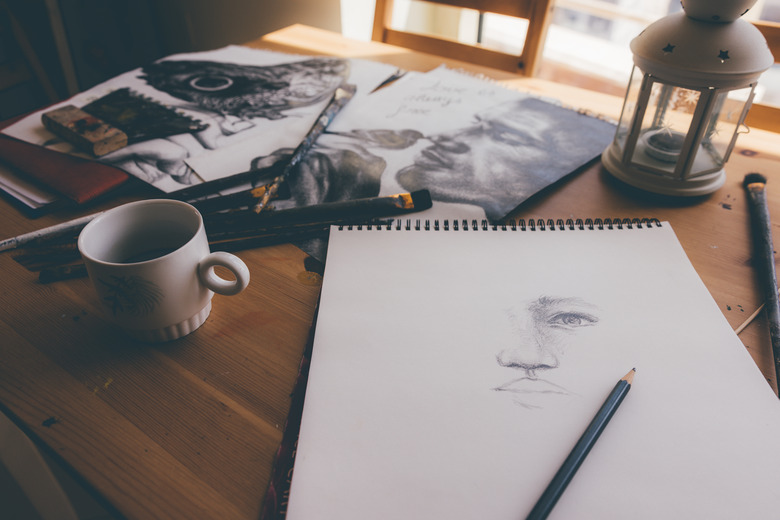How To Clean Paper Art Prints
We may receive a commission on purchases made from links.
Many people buy art prints on paper rather than canvas for various reasons. Paper art prints can have good color quality, are usually less expensive and may be easier to frame; however, when paper prints get dirty, fine details may begin to disappear. Framing techniques may not be sufficient to protect the print and, in some cases, may contribute to smudging. You can remedy this without necessarily damaging the original print. Here is a step-by-step guide to cleaning paper art prints.
Things Needed
-
Magnifier or microscope
-
Scalpel, iron with steam setting, solvent or soft eraser
-
Consolidator
-
Hydrogen peroxide
1. Evaluate the Damage
1. Evaluate the Damage
Determine the exact nature of your media and the damage to be repaired. Charcoal, graphite or pastels will not withstand surface cleaning. Look at the damage under a microscope to rule out flaking of the print media. Sticky substances, mold, insect excretions or rust should be considered for removal as they can cause continuing damage to the art, but some tapes may absorb the print and cannot be safely removed without damaging the image.
2. Remove Tape Carefully
2. Remove Tape Carefully
Remove pieces of tape carefully. The action of the sticky tape on the print will vary from one art print to another depending on the paper used, the medium used, the length of time the tape has been on the paper, the degree to which it enters the image plane, the method in which the image has been framed and the environment in which it is kept. Tape can be removed by carefully cutting it off with a scalpel, lifting it off with steam or heat, softening the glue bond with application of specific solvents or, in some cases, rolled off with a soft eraser. In other cases, the tape is better left on the surface, particularly if it has bonded with the ink.
3. Choose Correct Stain Removal Technique
3. Choose Correct Stain Removal Technique
Remove stains with the most appropriate method. Stains can be removed with solvent, water or bleach, all of which should be spot tested first to be sure they don't cause more harm. Solvents are used for sticky stains such as tape and glue. Water is used to remove stains due to acidity or discoloration of the paper. Bleach, commonly hydrogen peroxide, is used on rust, mold or brown spots. They can be used by dipping the entire image in a bath or applying as a type of poultice to the affected area.
4. Repair Flaking Media
4. Repair Flaking Media
Repair any flaking of the media by applying consolidator solution. For the best effect, this should be done with a fine artist's brush and dabbed on so the consolidator can work into the cracks in paint or inks and bind it to the surface of the paper.
5. Add a Protective Frame
5. Add a Protective Frame
Protect your art by framing it or storing it correctly. Use UV-filtering glass in your frame and protect the image from any south-facing light. Avoid hanging pictures on the inside of an exterior wall as temperature changes can cause condensation and mold growth inside the frame. If you need to store your prints, try to store them in a horizontal position wrapped in acid-free tissue paper.
Tip
The best way to keep your prints clean and bright is to protect them from the start.
Warning
It is easy to damage art prints while cleaning them. If you are in doubt or if the print is particularly valuable, you may wish to check with a professional conservation expert before making any attempts at home.
